Note4Students
From UPSC perspective, the following things are important :
Mains level: importance of the human element in military operations

Why in the News?
While initial feedback on the scheme is positive, there are challenges in integrating these recruits into military units, particularly regarding unit cohesion and psychological assimilation.
About Agniveer Scheme:
Aim: As a reform in Indian defense policy, it aims to recruit and retain young men and women in the armed forces through a short-service manpower model.
Key Highlights of the Scheme:
- Introduction of the Agnipath scheme to reform defense recruitment.
- Focus on a short-service manpower model with the potential for retention.
- Significant unit cohesion and psychological assimilation for effective combat readiness.
- Emphasizes on the enduring significance of the human element in warfare despite technological advancements.
Key Challenges:
- Ensuring seamless integration of Agniveers into military units.
- Nurturing unit cohesion and camaraderie among recruits.
- Addressing potential issues of competition and one-upmanship among Agniveers.
- Managing the psychological well-being and personality traits of recruits.
- Lack of a formal psychology test in the recruitment process.
Main Terms:
- Agnipath scheme: Indian defense policy reform for recruitment and retention.
- Agniveers: Young men and women recruited under the Agnipath scheme.
- Unit cohesion: The bond and teamwork within military units.
- Combat readiness: Preparedness of military units for combat situations.
- Human element: Importance of individual soldiers’ character and relationships in warfare.
Important Phrases:
- “Agniveers into the milieu of military units”
- “unit pride flows out of unit cohesion”
- “technology-based counter-measures”
- “focus on the human element”
- “psychological assimilation”
Quotes:
- “I hold it to be one of the simplest truths of war that the thing which enables a soldier to keep going with his weapon is the near presence or the presumed presence of a comrade.” – S.L.A. Marshall
Anecdotes:
- Reference to Russia-Ukraine conflict and Israel-Hamas conflict to highlight the enduring significance of the human element in warfare.
Useful Statements:
- “Irrespective of technological advancements in the realm of warfare, the character of a soldier to stand by his flanking mate can never be undermined.”
- “The onerous challenge would be to arrest any germination of an undesired personality trait among the lot given that 25% of the Agniveers will stay back.”
- “The government should consider introducing a test of ‘psychology’ as part of the recruitment process.”
Examples and References:
- Mention of Agniveers’ positive feedback from units.
- Reference to S.L.A. Marshall’s observations on the importance of comradeship in war.
Critical Analysis:
- The article emphasizes the importance of the human element in military operations despite technological advancements.
- It highlights challenges in integrating new recruits into military units and maintaining unit cohesion.
Way Forward:
- Address challenges in integrating Agniveers into military units.
- Prioritize psychological assimilation and character development alongside technical training.
- Consider implementing a psychology test in the recruitment process for better assessment and management of recruits.
Overall, the article underscores the importance of balancing technological advancements with the enduring significance of individual character and unit cohesion in military operations. It calls for a strategic approach in integrating and nurturing new recruits to ensure effective combat readiness.
Get an IAS/IPS ranker as your 1: 1 personal mentor for UPSC 2024
Attend Now
Note4Students
From UPSC perspective, the following things are important :
Prelims level: na
Mains level: Strengthening defense ties and collaborative efforts in maritime security
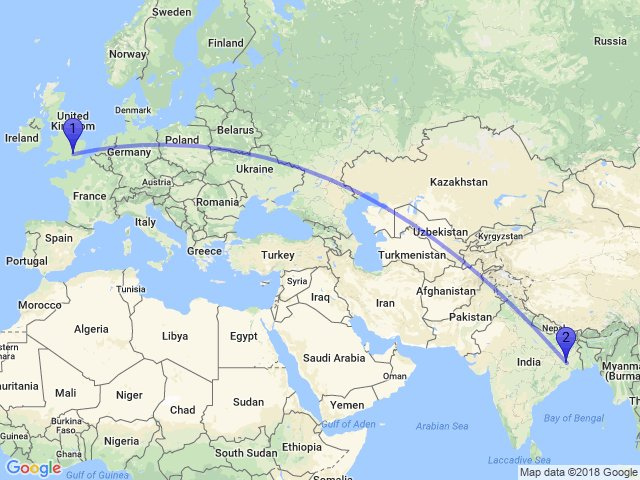
Central Idea:
The article emphasizes the deepening partnership between the United Kingdom and India, highlighting their shared interests in maritime security, global trade, and defense cooperation. It underscores the importance of strategic relationships, particularly in the face of global challenges such as maritime threats and conflicts like the Ukraine crisis. The piece celebrates the growing ties between the two nations and their collaborative efforts towards peace, prosperity, and upholding the rules-based International Order.
Key Highlights:
- Mutual reliance on maritime trade and the significance of securing global sea routes.
- Collaboration in Operation Prosperity Guardian to protect commercial shipping in the Red Sea and Gulf of Aden.
- Support for Ukraine against Russian aggression, including substantial military aid and ongoing assistance.
- Recognition of the Indo-Asia-Pacific region’s growing economic importance and the establishment of the U.K. tilt towards it.
- Strengthening defense ties between the UK and India, with increased military interactions, joint exercises, and defense industrial partnerships.
Key Challenges:
- Threats to maritime security, including aggression from groups like the Houthis and conflicts like the Ukraine crisis.
- Balancing national interests with international cooperation in addressing global challenges.
- Navigating geopolitical complexities and maintaining alliances amidst shifting power dynamics.
- Ensuring sustainable economic growth and prosperity in the face of global uncertainties.
Main Terms:
- Maritime security
- Global trade
- Defense partnership
- Operation Prosperity Guardian
- Indo-Asia-Pacific region
- Rules-based International Order

Important Phrases for mains answer writing:
- “The global lifelines of goods and resource”
- “Wanton violence and disregard for international law”
- “Strategies of isolationism or coercion”
- “Rules-based International Order”
- “Shared operational capabilities”
Quotes that can add value to to your arguments in mains answers:
- “Our nations need to secure, and make free from aggression and exploitation, the global lifelines of goods and resource that flow across the seas.”
- “The U.K., India, and the world have a common interest in ensuring this wanton violence and disregard for international law are not allowed to become normalised.”
- “The possibilities for global prosperity cannot be understated, and the importance of the Indo-Asia Pacific, not just to the United Kingdom, but to the world, has never been clearer.”
Anecdotes:
- Highlighting the successful efforts of Ukraine’s armed forces in resisting Russian aggression and reopening maritime corridors for grain exports.
- The positive reception of the UK Carrier Strike Group during its visit to India and the hospitality extended by Indian authorities.
Useful Statements for mains answer writing:
- “In this ever more unstable world, the U.K. is fortunate to have India as a good friend.”
- “History teaches us that strategies of isolationism or coercion have rarely produced strong coalitions.”
Examples and References:
- Mention of Operation Prosperity Guardian and the joint efforts to protect maritime trade routes.
- Ukraine’s resilience against Russian aggression and the support provided by the UK.
- Increased military interactions and defense collaborations between the UK and India.
Facts and Data for credibility in your answer:
- £2.5 billion in military aid provided by the UK to Ukraine in 2024-25, totaling almost £12 billion since 2022.
- Record numbers of UK ship visits to India and the deepening defense partnership between the two nations.
- The shift of the global economic center of gravity towards the Indo-Asia-Pacific region by 2050.
Critical Analysis:
The article provides a comprehensive overview of the strategic partnership between the UK and India, emphasizing shared interests in maritime security, global trade, and defense cooperation. It effectively highlights the challenges posed by maritime threats and conflicts like the Ukraine crisis while advocating for continued international cooperation and upholding the rules-based International Order. The piece demonstrates the importance of strategic alliances in navigating global uncertainties and promoting peace and prosperity.
Way Forward:
- Strengthening defense ties and collaborative efforts in maritime security.
- Continued support for Ukraine and other nations facing security threats.
- Enhancing economic cooperation and leveraging the opportunities in the Indo-Asia-Pacific region.
- Advocating for the rules-based International Order and promoting stability through diplomatic engagement and multilateral cooperation.
Get an IAS/IPS ranker as your 1: 1 personal mentor for UPSC 2024
Attend Now
Note4Students
From UPSC perspective, the following things are important :
Mains level: government's efforts in addressing housing challenges

Central Idea:
The article discusses the commendable steps taken by the government in the interim Budget 2024 towards achieving the ‘Housing for All’ initiative, particularly focusing on the construction of affordable houses and addressing environmental concerns. It emphasizes the need for integrating modern technologies and passive design strategies to ensure both affordability and sustainability in housing projects.
Key Highlights:
- Finance Minister Nirmala Sitharaman announced the construction of two crore additional houses over the next five years under the Pradhan Mantri Awas Yojana Gramin (PMAY-G) and introduced a new housing scheme for the middle class.
- The success of the PMAY scheme is acknowledged, with nearly three crore rural and 80 lakh urban affordable houses constructed since 2015.
- The adoption of modern technologies, such as Light House Projects (LHPs) and alternative construction methods like Mivan, is emphasized to reduce construction time, costs, and environmental impact.
- However, there’s a need to address the trade-offs between mass production and quality of life, particularly regarding thermal comfort and environmental sustainability.
- Passive design strategies are suggested as a solution to ensure thermal comfort and reduce greenhouse gas emissions during the operational stage of buildings.
- Initiatives like Eco Niwas Samhita and Smart Ghar III project in Rajkot are cited as examples of integrating passive design elements into affordable housing projects.
- Challenges include multi-stakeholder involvement, lack of awareness among end-users about the benefits of passive designs, and the need for systemic changes to incentivize sustainable practices across the building value chain.
Key Challenges:
- Balancing mass production with quality and sustainability.
- Addressing thermal comfort and environmental concerns in affordable housing projects.
- Overcoming multi-stakeholder involvement and lack of awareness about passive design benefits.
- Incentivizing developers to prioritize sustainability in housing projects.
Main Terms:
- Pradhan Mantri Awas Yojana (PMAY)
- Affordable housing
- Thermal comfort
- Greenhouse gas emissions
- Passive design strategies
- Light House Projects (LHPs)
- Global Housing Technology Challenge (GHTC)
- Eco Niwas Samhita
Important Phrases:
- “Housing for All” initiative
- “Low-carbon infrastructure”
- “Modern technologies in affordable housing”
- “Trade-offs with quality of life”
- “Passive design implementation”
- “Embodied and operational emissions”
- “Environmental consciousness”
- “Sustainable and inclusive future”
Useful quotes:
- “The announcement also prompts us to critically think about the potential trade-offs with quality of life and environmental concerns as a result of the rapid expansion of the housing sector.”
- “This underscores a critical paradox, wherein a technology deemed to offer a low-carbon alternative inadvertently contributes to elevated emissions during the operational stage.”
- “The escalating heat stress worldwide is anticipated to affect various population segments, leading to a substantial increase in the demand for cooling.”
- “However, the challenge lies in their implementation because of the multi-stakeholder nature of the building value chain.”
- “By weaving environmental consciousness into the fabric of housing initiatives, we can ensure that the homes we build not only shelter individuals but are also robust structures that make residents resilient to a warming climate.”
Anecdotes/Useful Statements:
- Example: The Smart Ghar III project in Rajkot demonstrates the integration of passive design strategies into affordable housing, ensuring indoor thermal comfort.
- Fact: Nearly three crore rural and 80 lakh urban affordable houses have been constructed under the PMAY scheme since 2015.
- Data: Construction technologies like Mivan offer higher efficiency and reduce the overall duration and cost of projects.
- Example: The Global Housing Technology Challenge (GHTC) includes Light House Projects (LHPs) across six sites in six states, leveraging modern technology for affordable housing.
- Fact: The lack of tangible benefits perceived by end-users hinders the adoption of passive designs in housing projects.
Critical Analysis:
The article effectively highlights the government’s efforts in addressing housing challenges while also acknowledging the environmental concerns associated with rapid construction. It emphasizes the need for a balanced approach that integrates modern technologies with passive design strategies to ensure both affordability and sustainability in housing projects. However, it also identifies key challenges such as multi-stakeholder involvement and lack of awareness among end-users, indicating the complexity of implementing sustainable practices across the building value chain.
Way Forward:
- Implementing passive design strategies in affordable housing projects.
- Raising awareness among stakeholders about the benefits of sustainable practices.
- Incentivizing developers to prioritize sustainability through policy interventions.
- Strengthening building codes to incorporate environmental considerations.
- Fostering collaboration among stakeholders to drive systemic changes in the building sector.
Overall, the article calls for a holistic approach towards housing development that not only meets the immediate needs of the population but also ensures long-term environmental sustainability.
Get an IAS/IPS ranker as your 1: 1 personal mentor for UPSC 2024
Attend Now
Note4Students
From UPSC perspective, the following things are important :
Prelims level: Na
Mains level: importance of prioritizing primary healthcare
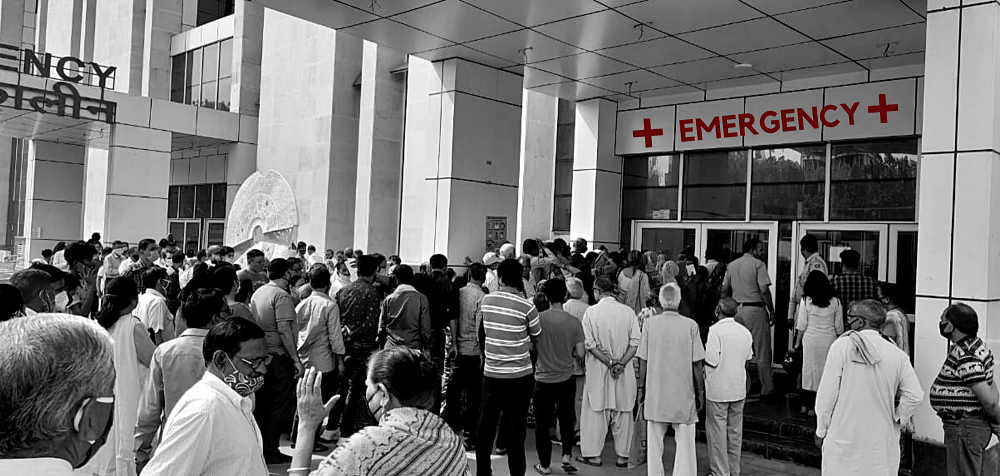
Central Idea:
The article discusses the importance of health reform in India, highlighting the necessity for political parties to prioritize it in their manifestos. It emphasizes the need to strengthen primary healthcare systems, citing successful examples from other countries like Thailand, and proposes comprehensive reforms to address India’s healthcare challenges.
Key Highlights:
- Manifestos serve as important documents reflecting political parties’ priorities and commitments.
- Both BJP and Congress manifestos in 2014 and 2019 highlighted the importance of revamping the primary healthcare system, but with differing perspectives on healthcare delivery.
- Past initiatives like the National Rural Health Mission under the UPA and policy continuity under the NDA have made incremental progress but haven’t addressed fundamental healthcare system flaws.
- Comparison with countries like Thailand and Turkey underscores India’s need for more ambitious and effective healthcare reforms.
- The focus should shift towards strengthening primary and secondary healthcare infrastructure to address the majority of health needs effectively.
- Successful reform examples emphasize deliberate planning, strong local capacity building, and a focus on community outcomes.
- Challenges include political will, overcoming preoccupation with high-end hospitals, and implementing synchronized reforms at the grassroots level.
Key Challenges:
- Political reluctance to prioritize primary healthcare over high-end hospital infrastructure.
- Resistance to reforming entrenched healthcare delivery models and governance structures.
- Capacity building and resource allocation at the district level to implement reforms effectively.
- Varying levels of capability across states necessitate tailored approaches to reform implementation.
- Addressing lifestyle factors contributing to disease incidence and out-of-pocket healthcare expenses.
- Overcoming market failures and governance challenges in healthcare service provision.
Main Terms or key terms for answer writing:
- Primary healthcare
- Universal Health Coverage (UHC)
- Health reform
- Public-private partnerships (PPP)
- Human resources for health
- Social health insurance
- Medical curriculum reform
- Decentralization
- Operational flexibilities
- Accountability framework
Important Phrases for quality answers:
- “Reforming the very architecture of the health system”
- “Building a system ‘fit for purpose'”
- “Operational flexibilities within a proactive, accountability framework”
- “Imagination to design the process of reform”
- “Infusion of new institutional and organizational capacities”
- “Reducing demand for hospitalization”
- “Out-of-pocket expenditures”
Quotes that you can use for essay writing:
- “Manifestos are useful documents… enabling people to hold the elected party accountable.”
- “India’s strategy for UHC has hinged on purchasing services from a private sector operating on the inflationary a fee for service model…”
- “Can our political parties commit themselves to such a process in their manifestos? Or, is that a big ask?”
Useful Statements:
- “Twenty years is a long time… Thailand… achieved significant outcomes within half the time span.”
- “India has a long way to go… States such as Bihar still have one doctor serving per 20,000 population.”
- “Successful examples of such reform processes show deliberate intent executed to a plan.”
Examples and References for value addition in your mains answer:
- Thailand’s Universal Health Coverage implementation in 2000.
- Turkey’s Health Transformation Program in 2003.
- India’s National Rural Health Mission and National Medical Commission establishment.
Facts and Data:
- India’s maternal mortality is three times more than the global average.
- 95% of ailments and disease reduction can be handled at the primary and secondary level.
- India’s public spending on healthcare has hovered around an average of 1.2% of GDP.
Critical Analysis:
The article provides a critical analysis of past healthcare initiatives in India, highlighting their incremental nature and failure to address fundamental system flaws. It underscores the importance of prioritizing primary healthcare and comprehensive reform to achieve equitable, effective healthcare delivery.
Way Forward:
- Prioritize strengthening primary healthcare infrastructure.
- Implement comprehensive healthcare reforms addressing governance, human resources, and service delivery.
- Tailor reform strategies to suit varying state capabilities.
- Shift focus towards community outcomes and accountability.
- Address lifestyle factors contributing to healthcare burden.
- Overcome political reluctance and vested interests to achieve meaningful reform.
Answer the following question and write your answer in comment box
How can India learn from successful healthcare reform initiatives in other countries like Thailand and Turkey to address its own healthcare challenges effectively?
Get an IAS/IPS ranker as your 1: 1 personal mentor for UPSC 2024
Attend Now
Note4Students
From UPSC perspective, the following things are important :
Prelims level: The Wildlife Trust of India
Mains level: human fatalities due to wildlife attacks
.jpg?$p=796eb02&f=16x10&w=852&q=0.8)
Central Idea:
The article discusses the escalating human-wildlife conflict in Wayanad, Kerala, attributing it to the loss of ecological connectivity and habitat fragmentation caused by human activities such as deforestation, monoculture plantations, and unchecked tourism. It emphasizes the urgent need for coordinated efforts from government departments and stakeholders to address the crisis and restore ecological balance in the region.
Key Highlights:
- Recent tragic incidents involving human fatalities due to wildlife attacks, highlighting the severity of the conflict.
- Decline in elephant corridors over the past two decades, leading to increased wildlife incursions into human settlements.
- Impact of wildlife attacks on human lives, agriculture sector, and domestic animals.
- Destructive effects of deforestation, monoculture plantations, and tourism on the ecosystem.
- Failure of authorities to address concerns raised by scientists and activists regarding habitat management and conservation strategies.
- Inadequate response from the government, including the lack of proper surveillance and monitoring in wildlife management operations.
Key Challenges:
- Loss of ecological connectivity and habitat fragmentation due to human activities.
- Escalating human-wildlife conflict resulting in fatalities and economic losses.
- Lack of effective coordination among government departments and stakeholders.
- Failure to enforce environmental laws and conservation measures.
- Insufficient surveillance and monitoring in wildlife management operations.
Main Terms:
- Human-wildlife conflict: Conflict arising from interactions between humans and wild animals, often due to habitat loss and encroachment.
- Ecological connectivity: The uninterrupted movement of species between habitats, essential for maintaining biodiversity.
- Habitat fragmentation: Division of natural habitats into smaller, isolated patches, disrupting wildlife movement and ecological processes.
- Monoculture plantations: Agricultural or forestry practices where only one species is cultivated, leading to loss of biodiversity and ecosystem services.
- Ecotourism: Tourism focused on visiting natural areas while conserving the environment and improving the well-being of local people.
- Wildlife corridors: Strips of habitat connecting fragmented patches, facilitating the movement of wildlife.
Important Phrases:
- “Loss of ecological connectivity and habitat fragmentation”
- “Escalating human-wildlife conflict”
- “Destructive effects of deforestation and monoculture plantations”
- “Failure of authorities to address concerns”
- “Inadequate response from the government”
Quotes:
- “In a war with nature, no human would survive.”
- “The continuous struggle of scientists and activists demanding the revival of habitat management has fallen on deaf ears.”
- “The recent Operation Jumbo parade captured nine elephants but lacked adequate surveillance and monitoring.”
Useful Statements:
- “Loss of ecological connectivity due to habitat fragmentation exacerbates the human-wildlife conflict.”
- “Government efforts must focus on coordinated strategies to address the crisis and restore ecological balance.”
- “Failure to enforce environmental laws and conservation measures further aggravates the situation.”
Examples and References:
- Recent incidents involving human fatalities due to wildlife attacks in Wayanad.
- The Wildlife Trust of India’s report on elephant corridors.
- Official data documenting human deaths and crop losses due to wildlife attacks.
Facts and Data:
- Documented human deaths due to wildlife attacks in Wayanad in the last 10 years.
- Cases of crop loss and domestic animal deaths due to wildlife incursions from 2017 to 2023.
- Hectares of monoculture plantations out of total forest area in Wayanad.
Critical Analysis:
The article effectively highlights the interconnected factors contributing to the human-wildlife conflict in Wayanad, emphasizing the role of human activities such as deforestation and unchecked tourism. However, it lacks detailed analysis of specific policy failures and potential solutions to address the crisis.
Way Forward:
- Implement coordinated strategies involving government departments and stakeholders to restore ecological balance.
- Enforce environmental laws and conservation measures to mitigate habitat loss and fragmentation.
- Enhance surveillance and monitoring in wildlife management operations to prevent human-wildlife conflicts.
- Promote sustainable land use practices and eco-friendly tourism initiatives to preserve natural habitats and biodiversity.
Answer the following question in comment box
“How can governments, stakeholders, and communities combat escalating human-wildlife conflict in Wayanad, Kerala, addressing habitat loss, deforestation, and tourism? Additionally, how can they restore ecological balance, mitigate economic losses, and ensure safety for both humans and wildlife?”
Get an IAS/IPS ranker as your 1: 1 personal mentor for UPSC 2024
Attend Now
Note4Students
From UPSC perspective, the following things are important :
Prelims level: Federalism
Mains level: a critical analysis of the state of Indian democracy
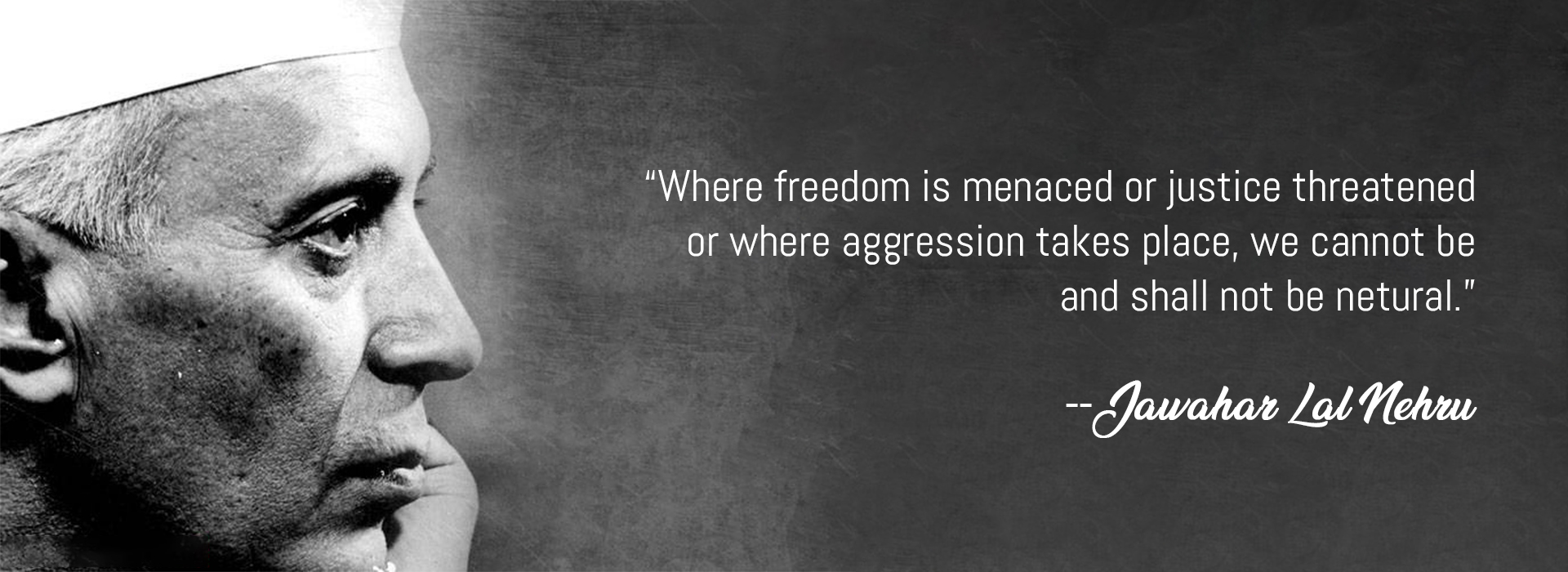
Central Idea:
The article by M.K. Narayanan highlights the concerning decline in parliamentary practices and the polarization of Indian politics, particularly in the lead-up to the general election. It discusses the divisive nature of recent parliamentary sessions, the erosion of democratic principles, and the growing rift between the ruling party and the opposition. Narayanan emphasizes the need for adherence to constitutional mandates, the preservation of federalism, and the importance of managing differences within a rules-based order to safeguard India’s democracy.
Key Highlights:
- The final parliamentary session before the general election was marked by divisiveness and acrimony between the ruling party and the opposition.
- Narayanan underscores India’s historical commitment to democracy and parliamentary practices, citing the Constitution’s provisions for Fundamental Rights, Fundamental Duties, and Directive Principles of State Policy.
- Despite external stability, internal challenges persist, including potential flashpoints like the farmers’ agitation in Punjab and Haryana and unrest in the northeast.
- The article reflects on the heightened polarization in Indian politics, with the Prime Minister accusing the opposition of divisive tactics and vice versa.
- Issues such as the construction of the Ram Temple in Ayodhya and attempts to enforce an Uniform Civil Code have become politicized, further exacerbating divisions.
- The erosion of federalism is noted, with the ruling party accused of centralizing power and undermining regional parties.
- Engineered defections to the ruling party raise concerns about the integrity of the electoral process and democratic principles.
- The role of Governors in opposition-ruled states is contentious, with accusations of central interference leading to strained Centre-State relations.
Key Challenges:
- Divisiveness and acrimony in parliamentary sessions.
- Polarization and politicization of issues.
- Erosion of federalism and centralization of power.
- Engineered defections undermining democratic principles.
- Tensions between Centre and opposition-ruled states.
- Threats to constitutional mandates and democratic norms.
Main Terms and key words for answer writing:
- Parliamentary democracy
- Federalism
- Polarization
- Divisiveness
- Constitution
- Centre-State relations
- Electoral integrity
- Democratic principles
- Rule of law
- Defections
Important Phrases for answer quality enrichment:
- “Divided nation”
- “Engineered defections”
- “Polarized politics”
- “Centralization of power”
- “Constitutional niceties”
- “Rules-based order”
- “Centre-State relations”
- “Erosion of democratic norms”
Quotes:
- “The unseemly spectacle has given rise to concerns about the future of parliamentary democracy in the country.”
- “The country today appears more divided than it has at any time in the recent past.”
- “The absence of a rules-based order… could overturn the system altogether.”
- “Tolerating differences is the first order of priority.”
- “Everything has to be subordinated to the requirements of the Constitution.”
Useful Statements:
- “The erosion of democratic principles undermines the foundation of our parliamentary democracy.”
- “The politicization of issues further exacerbates divisions and hampers constructive dialogue.”
- “Adherence to constitutional mandates is essential to preserve the integrity of our democratic institutions.”
- “The centralization of power at the expense of federalism threatens the balance of governance.”
- “The integrity of the electoral process must be upheld to ensure the legitimacy of democratic outcomes.”
Examples and References:
- The farmers’ agitation in Punjab and Haryana.
- Tensions between the Centre and opposition-ruled states.
- Instances of engineered defections to the ruling party.
- Accusations of central interference in the functioning of opposition-ruled states.
- Passage of resolutions in Parliament on contentious issues like the Ram Temple in Ayodhya.
Facts and Data:
- India’s historical commitment to democracy and adherence to constitutional principles.
- Instances of engineered defections and accusations of central interference in opposition-ruled states.
- Polarization and acrimony observed in parliamentary sessions leading up to the general election.
Critical Analysis:
The article provides a critical analysis of the state of Indian democracy, highlighting the erosion of parliamentary practices, growing polarization, and challenges to federalism. It underscores the need for adherence to constitutional mandates, the preservation of democratic norms, and the importance of constructive dialogue to address contentious issues. The article raises concerns about the integrity of the electoral process and the erosion of democratic principles, calling for urgent action to safeguard India’s democracy.
Way Forward:
- Uphold constitutional mandates and democratic principles.
- Foster constructive dialogue and mutual respect between political parties.
- Safeguard federalism and decentralize power to promote inclusivity and diversity.
- Ensure the integrity of the electoral process and prevent engineered defections.
- Prioritize the national interest over partisan politics and work towards consensus-building on key issues.
Overall, the article underscores the importance of upholding democratic values and institutions to ensure the continued stability and prosperity of India’s democracy.
Get an IAS/IPS ranker as your 1: 1 personal mentor for UPSC 2024
Attend Now
Note4Students
From UPSC perspective, the following things are important :
Prelims level: The 73rd and 74th Constitutional Amendments Acts
Mains level: Ensuring greater devolution of powers and responsibilities to lower tiers of panchayats
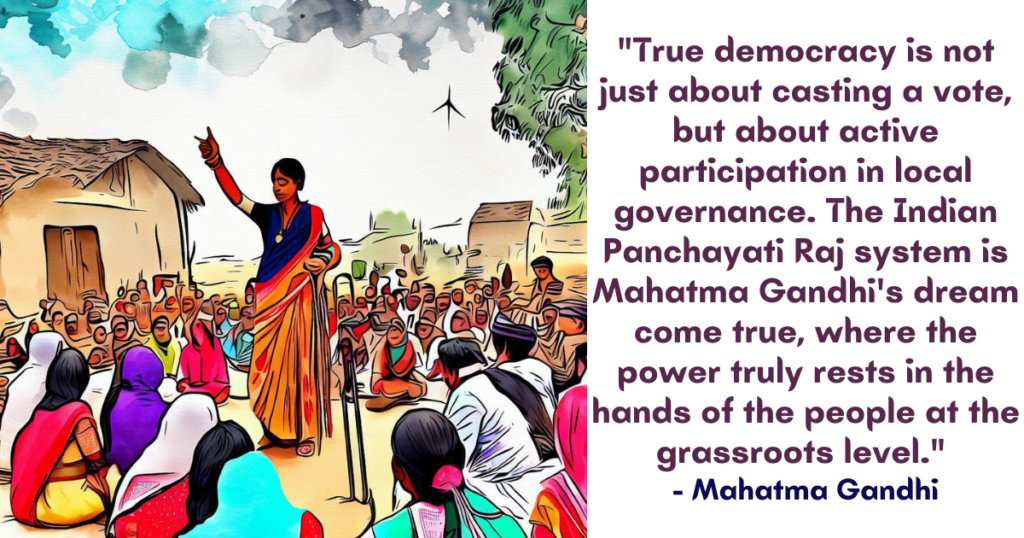
Central Idea:
The article discusses the progress and challenges of decentralization in India, focusing on the effectiveness of Panchayati Raj institutions in local governance. It highlights the limited success in revenue generation by these institutions despite constitutional provisions and emphasizes the need for greater efforts towards self-sufficiency.
Key Highlights:
- Background of Decentralization: The 73rd and 74th Constitutional Amendments Acts aimed to empower local bodies for self-governance, leading to the establishment of the Ministry of Panchayati Raj in 2004.
- Fiscal Devolution: The constitutional amendment outlined fiscal devolution details, including own revenue generation by panchayats. However, most revenue still comes from grants, with only 1% generated through taxes.
- Avenues for Revenue: The article lists various avenues for revenue generation by panchayats, including property tax, user charges, and innovative projects like rural business hubs and renewable energy initiatives.
- Role of Gram Sabhas: Gram sabhas play a crucial role in local development and revenue generation by leveraging local resources, engaging in planning, and imposing taxes for community welfare.
- Challenges: Despite potential avenues for revenue, panchayats face challenges such as a culture of dependency on grants, reluctance to impose taxes, and lack of authority in tax collection.
- Dependency Syndrome: The article discusses the prevalent “freebie culture” and the reluctance of elected representatives to impose taxes due to concerns about popularity.
Key Challenges:
- Overreliance on grants from central and state governments.
- Reluctance of elected representatives to impose taxes due to concerns about popularity.
- Lack of authority and capacity in tax collection by panchayats.
- Prevailing “freebie culture” hindering public willingness to pay taxes.
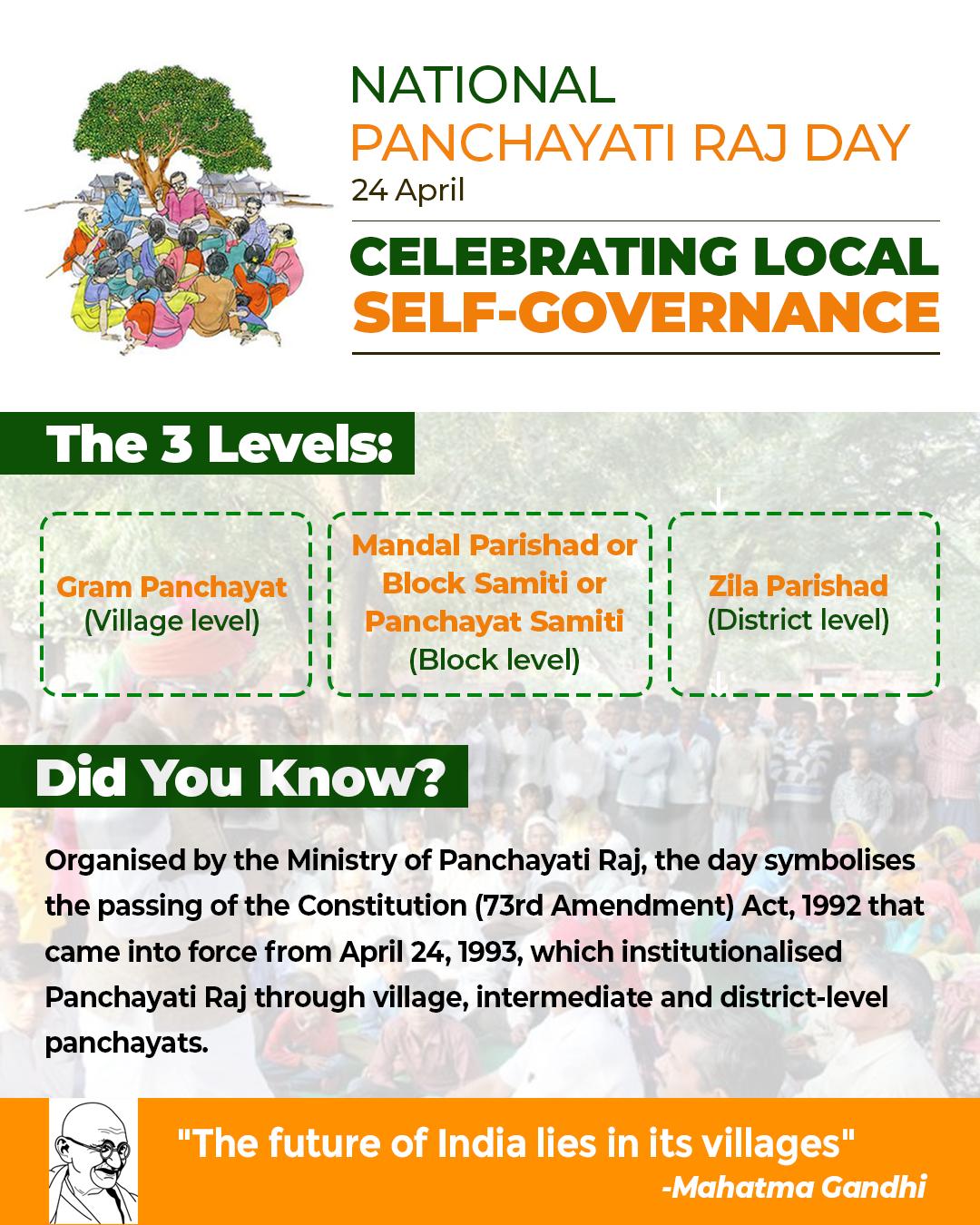
Main Terms:
- Decentralization: Transfer of authority and responsibility from central to local government.
- Panchayati Raj: System of local self-government in rural areas.
- Fiscal Devolution: Transfer of financial powers from central to local governments.
- Own Source of Revenue (OSR): Revenue generated by local bodies through taxes, fees, and other means.
- Gram Sabha: Village assembly responsible for local governance and decision-making.
Important Phrases for answer writing:
- “Decentralization initiatives”
- “Revenue generation efforts”
- “Own source of revenue”
- “Freebie culture”
- “Dependency syndrome”
Quotes for answer quality improvement:
- “Panchayats earn only 1% of the revenue through taxes.”
- “Gram sabhas have a significant role in fostering self-sufficiency and sustainable development.”
- “The dependency syndrome for grants has to be minimized.”
Useful Statements that can be used for essay:
- “Despite efforts towards decentralization, many panchayats still rely heavily on grants for revenue.”
- “Gram sabhas can play a pivotal role in promoting entrepreneurship and local development.”
- “There is a need to educate elected representatives and the public on the significance of revenue generation for panchayat development.”
Examples and References:
- The 73rd and 74th Constitutional Amendments Acts.
- Ministry of Panchayati Raj’s expert committee report on own source of revenue.
- Data highlighting the percentage of revenue generated by panchayats through taxes.
- Examples of successful revenue generation initiatives by panchayats, such as property tax and user charges.
Facts and Data for critical arguments in answer:
- Panchayats earn only 1% of revenue through taxes, with 80% from the Centre and 15% from the States.
- Allocation for rural local bodies increased significantly in recent Finance Commissions, reaching ₹2,80,733 crore in the 15th Finance Commission.
- Tax revenue collected by panchayats decreased from ₹3,12,075 lakh in 2018-19 to ₹2,71,386 lakh in 2021-2022.
Critical Analysis:
While constitutional amendments and expert committee reports have outlined mechanisms for fiscal devolution and revenue generation, there remains a significant gap between policy intent and implementation. Factors such as political reluctance, administrative capacity constraints, and societal attitudes towards taxation pose significant challenges to effective decentralization.
Way Forward:
- Strengthening capacity building initiatives for panchayats in tax administration and financial management.
- Encouraging public awareness campaigns to promote the importance of local revenue generation for sustainable development.
- Ensuring greater devolution of powers and responsibilities to lower tiers of panchayats.
- Exploring innovative revenue generation avenues such as public-private partnerships and leveraging local resources for economic development.
Improve your answer writing with us and crack the mains
Try to attempt following question and write the answer in comment box below
- “What are the various sources available for Panchayats to generate revenue, and how can these sources contribute to enhancing the financial autonomy and sustainability of Panchayati Raj institutions?”
- “What are the main challenges hindering the financial autonomy of Panchayati Raj?”
- “Why is financial autonomy crucial for the effective functioning of local governance?”
Get an IAS/IPS ranker as your 1: 1 personal mentor for UPSC 2024
Attend Now
Note4Students
From UPSC perspective, the following things are important :
Prelims level: IT Rules 2021
Mains level: importance of upholding free speech in the digital age

Central Idea:
Justice Gautam Patel’s landmark decision on the Kunal Kamra’s case underscores the critical importance of upholding the constitutional right to free speech, particularly in the realm of social media. The decision highlights the inherent dangers of arbitrary censorship and the need for clear, reasonable restrictions in line with constitutional principles.
Key Highlights:
- Upholding Free Speech: The decision reaffirms the sacrosanct nature of the constitutional guarantee of free speech, emphasizing its protection against undue state encroachment.
- Rejection of Arbitrary Censorship: Justice Patel condemns the amended Rule 3(1)(b)(v) of the IT Rules 2021 as vague and overbroad, posing a threat to critical discourse and debate.
- Constitutional Principles: The judgment invokes Article 19 and Article 14 of the Constitution, arguing that the amended rule infringes upon fundamental rights and lacks reasonable standards.
- Importance of Judicial Review: The decision underscores the role of judicial review in curbing potential abuses of power by government entities, particularly in safeguarding democratic principles.
- Recognition of Digital Regulation: While acknowledging the need to combat misinformation, the judgment insists on the importance of balanced regulation that respects free speech rights.
Key Challenges:
- Interpretation of Constitutional Rights: Balancing free speech with the need for regulation presents a challenge in defining clear and reasonable restrictions.
- Enforcement and Compliance: Ensuring compliance with constitutional principles and judicial decisions poses challenges in a dynamic digital landscape.
- Government Response: The government’s response to judicial decisions and its commitment to upholding constitutional principles may vary, influencing the effectiveness of legal interventions.
Main Terms or key terms for answer writing:
- Free Speech
- Constitutional Guarantee
- Social Media Regulation
- Arbitrary Censorship
- Judicial Review
- Fundamental Rights
- Digital Platforms
- Misinformation
- Democratic Principles
Important Phrases for good marks in mains:
- “The sacrosanctity of the inviolate constitutional guarantee of free speech”
- “Vague and overbroad”
- “The imperative of combatting fakery and misinformation”
- “A bulwark against the excesses of majoritarian assemblies”
- “Agents of injustice”
- “Inter-institutional comity”
Quotes that you can use in essay for value addition:
- “The cacophony of dissent and disagreement is the symphony of a democracy at work.”
- “Falsehood flies, and truth comes limping after it.”
- “The will of the State is subject to scrutiny by those affected by the exercise of State power.”
- “Democratic power is a trust held upon conditions.”
Useful Statements for value addition:
- “The decision reaffirms the constitutional conscience and rejects the potential for wanton abuse of power.”
- “Fear-instilled stillness ill serves the case of a vibrant democracy.”
- “A law that permits its enforcers to become agents of injustice cannot be countenanced in a constitutional democracy.”
Examples and References:
Facts and Data for value addition and credibility to your arguments:
- Mention of the amended Rule 3(1)(b)(v) of the IT Rules 2021.
- Reference to Justice Patel’s decision on the Kunal Kamra’s case, dated 31st January.
Critical Analysis:
Justice Patel’s decision serves as a significant safeguard against potential abuses of power and underscores the importance of upholding free speech in the digital age. By rejecting arbitrary censorship and emphasizing the need for clear, reasonable restrictions, the judgment sets a crucial precedent for protecting democratic principles.
Way Forward:
- Ensure compliance with constitutional principles in regulating digital platforms.
- Encourage balanced regulation that combats misinformation while respecting free speech rights.
- Foster inter-institutional comity by heeding judicial decisions and promoting democratic accountability.
By adhering to these principles, policymakers can navigate the complexities of digital regulation while upholding fundamental rights and democratic values.
Improve your answer writing with us and crack the mains
Try to attempt following question and write the answer in comment box below
- How does Justice Patel’s decision in the Kunal Kamra’s case uphold the constitutional right to free speech?
- What are the key challenges in balancing free speech with the need for regulation, as highlighted in the judgment?
- How does the judgment emphasize the importance of judicial review in safeguarding democratic principles in the digital age?
Get an IAS/IPS ranker as your 1: 1 personal mentor for UPSC 2024
Attend Now
Note4Students
From UPSC perspective, the following things are important :
Prelims level: Geographical locations of dams
Mains level: Interstate water disputes
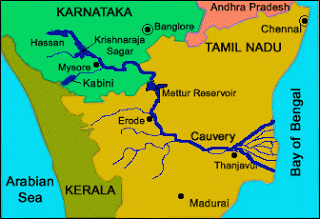
Central Idea:
The article recounts the historical background and negotiations leading to the Agreement between the states of Mysore and Madras regarding the construction and regulation of dams on the Cauvery River. It highlights the challenges faced, key terms agreed upon, and the significance of the agreement in resolving disputes and laying down principles for water management in the region.
Key Highlights:
- M. Visvesvaraya’s proposal for the Krishnarajasagara (KRS) reservoir in 1910.
- Arbitration led by Sir H.D. Griffin resulting in the approval of the KRS dam project.
- Friction between Madras and Mysore over the execution of the dam’s next phase.
- Negotiations and arbitration processes spanning several years.
- Drafting of rules for the regulation of KRS and other reservoirs.
- The signing of the Agreement, facilitating the construction of KRS and Mettur dams.
- Consent for irrigation projects and assurance of water supplies to Madras.
- Perception of the agreement as a fair settlement by Mysore’s Dewan, A.R. Banerji.
Key Challenges:
- Disputes over water rights and dam construction between upper and lower riparian states.
- Lengthy negotiations and arbitration processes due to differing interests and concerns.
- Balancing the need for irrigation expansion with the preservation of water resources.
- Ensuring equitable distribution of water while addressing the concerns of both states.
Main Terms:
- Construction of KRS and Mettur dams.
- Limitation on new irrigation areas under the Mettur project.
- Formulation of rules for the regulation of reservoirs.
- Assurance of water supplies to Madras.
- Review of certain stipulations after 50 years.
Important Phrases:
- “Kannambadi Arbitration Case”
- “Prescriptive right of Madras”
- “Broader settlement”
- “Give and take”
- “British hand”
Quotes:
- “A fair and honourable settlement.” – A.R. Banerji, Mysore Dewan.
- “The spirit of ‘give and take’ reigned throughout.” – A.R. Banerji.
- “No British hand behind the settlement.” – A.R. Banerji.
Anecdotes:
- Sir H.D. Griffin’s swift arbitration process.
- Negotiations between Mysore and Madras officials.
- A.R. Banerji’s statement in The Hindu.
Useful Statements:
- “The pact allowed a review of certain stipulations of the agreement after 50 years.”
- “The agreement was perceived as a fair settlement by both parties involved.”
- “Balancing irrigation expansion with water resource preservation was a key challenge.”
Examples and References:
- Construction of the KRS and Mettur dams.
- Negotiation processes between Madras and Mysore officials.
- A.R. Banerji’s statement published in The Hindu.
Facts and Data:
- Construction of KRS with a capacity of 44.83 TMC.
- Limitation of new irrigation areas under the Mettur project to 3.01 lakh acres.
- Review of certain stipulations after 50 years.
Critical Analysis:
The Agreement marked a significant milestone in resolving the Cauvery River dispute between Mysore and Madras. Despite initial challenges and differing interests, the agreement laid down principles for water management and established a framework for future cooperation. While perceptions may vary, A.R. Banerji’s statement underscores the agreement’s perceived fairness and the spirit of cooperation between the two states.
Way Forward:
The Agreement serves as a historical precedent for resolving interstate water disputes through negotiation and compromise. Moving forward, stakeholders should build upon this foundation to address evolving water management challenges, ensuring equitable distribution and sustainable use of water resources in the region. Cooperation and dialogue remain essential for fostering lasting solutions to water-related conflicts.
Get an IAS/IPS ranker as your 1: 1 personal mentor for UPSC 2024
Attend Now
Note4Students
From UPSC perspective, the following things are important :
Prelims level: India-Middle East-Europe Economic Corridor (IMEEC)
Mains level: deeper collaboration between Greece and India

Central Idea:
The article discusses the growing strategic relationship between Greece and India, emphasizing the importance of deepening bilateral ties across various sectors. It highlights the mutual benefits of collaboration, the significance of security and stability in their respective regions, and the potential for economic cooperation through initiatives like the India-Middle East-Europe Economic Corridor (IMEEC).
Key Highlights:
- The visit of Greek Prime Minister Kyriakos Mitsotakis to India signifies the momentum in strengthening bilateral relations initiated by Indian Prime Minister Narendra Modi’s visit to Greece.
- Both countries recognize the strategic importance of their geographical locations and the need for cooperation to ensure security, stability, and prosperity.
- Collaboration extends across strategic, military, and business sectors, with examples such as joint military exercises and investment partnerships.
- Economic reforms in Greece under the Mitsotakis government aim to boost sustainable growth and position the country as a reliable partner in the Eastern Mediterranean.
- The concept of the India-Middle East-Europe Economic Corridor (IMEEC) emerges as a promising avenue for enhancing economic ties between India and Greece.
- Emphasis is placed on fostering people-to-people ties through cultural exchanges, education programs, and media cooperation.
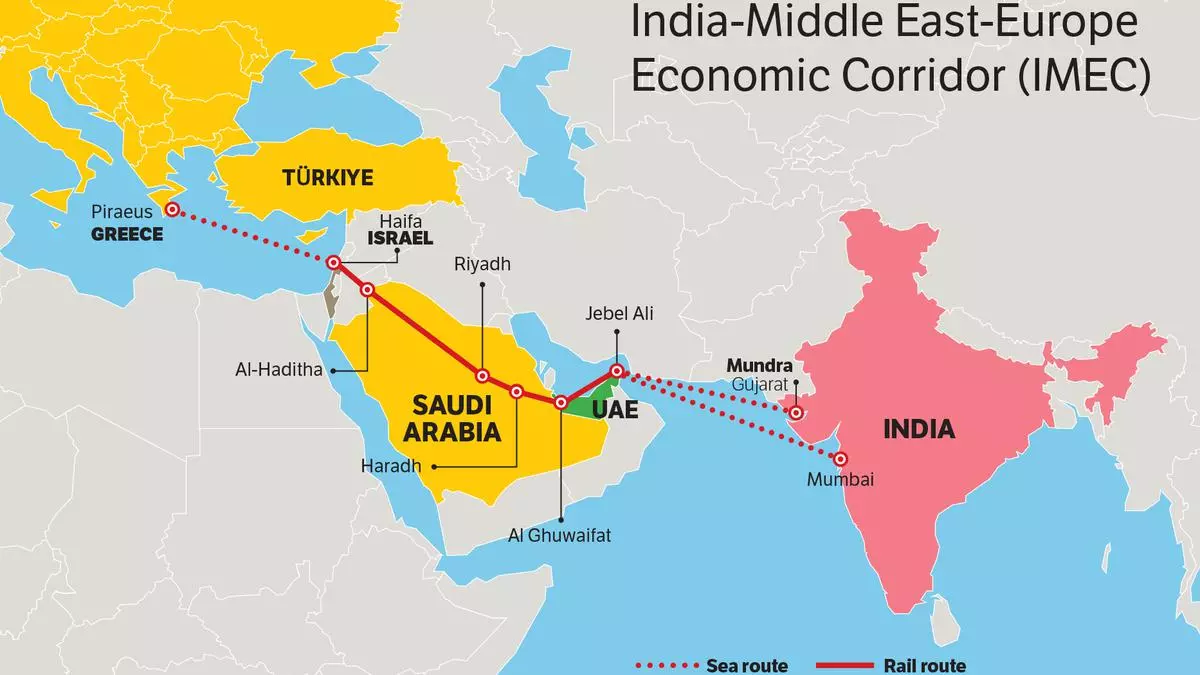
Key Challenges:
- The pace of bilateral cooperation has been slow, indicating a need for greater momentum.
- Despite existing collaborations, there is room for further expansion and diversification of partnerships.
- Ensuring sustained commitment from both governments and businesses to deepen ties amidst global uncertainties.
Main Terms:
- Strategic relationship
- Geopolitical volatility
- Bilateral cooperation
- Economic reforms
- India-Middle East-Europe Economic Corridor (IMEEC)
- People-to-people ties
Important Phrases:
- “No better gateway to Europe than Greece”
- “Prisoners of geography”
- “Constructing the India-Middle East-Europe Economic Corridor (IMEEC)”
- “Critical year in the building of the Greece-India strategic partnership”
Quotes:
- “India will find no better gateway to Europe than my country and for Greece there is no better gateway to Asia than a close strategic relationship with India.”
- “Greece is still by far the best European country to invest in.”
- “The fact that the political leaders of Greece and India are exchanging visits within a short time frame shows not just their determination to move the relationship forward but also the urgency they attach to this task.”
Useful Statements:
- Collaboration between Greece and India is essential for ensuring security, stability, and prosperity in their respective regions.
- Economic reforms in Greece aim to position the country as a reliable partner in the Eastern Mediterranean.
- Initiatives like the India-Middle East-Europe Economic Corridor (IMEEC) offer significant potential for enhancing bilateral economic ties.
Examples and References:
- Joint military exercises between the Indian Navy and Greek armed forces.
- Investment partnerships between Indian and Greek businesses, such as the construction of a new airport on the island of Crete.
- The involvement of Indian-Canadian billionaire Prem Watsa in Greek investments, advocating for Greek-Indian business cooperation.
Facts and Data:
- Historic visit of Indian Prime Minister Narendra Modi to Greece in August 2023.
- Collaboration between Indian and Greek businesses in various sectors, including construction, shipping, and finance.
Critical Analysis:
- The article underscores the significance of deeper collaboration between Greece and India in light of geopolitical challenges and economic opportunities.
- It highlights the need for accelerated efforts to overcome historical inertia and realize the full potential of the bilateral relationship.
- Emphasis on people-to-people ties reflects a holistic approach to strengthening cultural and educational exchanges alongside economic and strategic cooperation.
Way Forward:
- Both governments should prioritize the implementation of existing agreements and explore new avenues for cooperation.
- Continued engagement between businesses from both countries is crucial for diversifying and expanding partnerships.
- Investing in educational and cultural exchanges can foster mutual understanding and long-term cooperation.
- Regular high-level visits and dialogue mechanisms should be maintained to sustain momentum and address emerging challenges.
Get an IAS/IPS ranker as your 1: 1 personal mentor for UPSC 2024
Attend Now
Note4Students
From UPSC perspective, the following things are important :
Prelims level: Na
Mains level: mismatch between engineering graduates' skills and service sector demands

Central Idea:
- Article discusses the growing significance of the services sector in India’s economy and the demand for skilled manpower. Proposes the introduction of a generic “service engineering” course to address the need for professionals adept at navigating modern service-oriented industries.
Key Highlights:
- Services sector contributes significantly to India’s Gross Value Added and employment.
- Engineering graduates increasingly employed in non-technical roles within the services sector due to adaptable skills.
- Lack of generic courses tailored to service sector needs, leading engineers to fill entry-level service jobs.
- Proposal for “service engineering” course blending technical proficiency, soft skills, and industry-specific knowledge.
- Integration of AI and IoT to enhance employability.
- Emphasis on diverse curriculum covering service delivery fundamentals, process improvement, and client management.
Key Challenges:
- Resistance from traditional education systems and institutions.
- Development and implementation of comprehensive curriculum.
- Ensuring affordability and accessibility, especially in tier 2 and 3 cities.
- Overcoming societal biases and stereotypes about career paths.
- Adapting to rapid technological advancements and industry changes.
Main Terms:
- Services sector
- Engineering graduates
- Service-oriented roles
- Soft skills
- Technical proficiency
- Service management principles
- Process improvement methodologies
- Client management
Important Phrases for answer writing:
- “Service engineering”
- “White-collar service environments”
- “Dynamic service landscape”
- “Process reengineering”
- “Critical thinking frameworks”
- “Virtual learning environments”
- “Inclusivity in education”
- “Services-driven economy”
Quotes:
- “Engineers are increasingly finding employment not solely based on a precise match of skills but due to the adaptability and problem-solving mindset ingrained in their education.”
- “Just as an engineering education equips the student with the basic skills to find a vocation in an industrial setup, we need an equivalent services skill education.”
- “The introduction of such a course — let us call it ‘service engineering’ — holds transformative potential, offering a pathway to enhanced employability, improved service delivery, and sustained economic growth.”
Anecdotes:
- Example of engineering graduates transitioning into non-technical roles within the services sector, such as banking, insurance, and retail.
- Mention of the increasing participation of women in the workforce and how a service engineering course could support their work-life balance.
Useful Statements:
- “The rising prominence of the services sector has opened avenues for engineers to be gainfully employed in white-collar jobs.”
- “Such a course can offer a holistic blend of technical proficiency, soft skills, and industry-specific knowledge essential for success in service-centric roles.”
Examples and References:
- Data on employability of engineering graduates.
- Commissioned report on engineering seat enrollment.
- Periodic Labour Force Survey (PLFS) data on women’s participation in the workforce.
Critical Analysis:
- The article effectively highlights the mismatch between engineering graduates’ skills and service sector demands, proposing a “service engineering” course as a solution. However, it lacks in-depth analysis of challenges and implementation strategies, especially regarding soft skills integration.
Way Forward:
- Collaborate with industry experts for curriculum design.
- Offer scholarships for affordability and accessibility.
- Conduct awareness campaigns to challenge biases.
- Establish partnerships for practical training.
- Continuously update the curriculum to match industry changes.
Get an IAS/IPS ranker as your 1: 1 personal mentor for UPSC 2024
Attend Now

Central Idea:
The year 2024 is marked by a significant global exercise in democracy, with concerns arising over the impact of AI on elections. However, while efforts to regulate AI and address disinformation are underway, there are potential unintended consequences that may exacerbate existing challenges and concentrate power within the AI industry.
Key Highlights:
- Increased global engagement in elections in 2024 prompts worries about AI-driven disinformation.
- Governments rush to regulate AI to combat disinformation, but unintended consequences may worsen existing issues.
- Concentration of power within the AI industry may occur due to regulatory requirements, hindering competition and innovation.
- Ethical and transparency guidelines for AI development face challenges due to differing values and priorities.
- Democracy faces numerous challenges beyond AI, including political repression, violence, and electoral fraud.
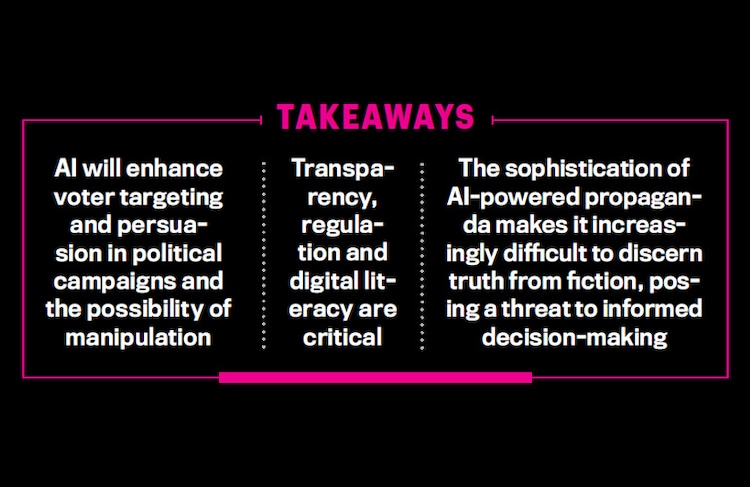
Key Challenges:
- Balancing the need to regulate AI with potential unintended consequences that may worsen existing problems.
- Addressing power concentration within the AI industry without stifling innovation and competition.
- Establishing ethical guidelines for AI development amidst diverse societal values and priorities.
- Ensuring meaningful transparency in AI systems through effective auditing mechanisms.
- Anticipating future risks of AI in electoral processes and formulating proactive regulations.
Main Terms:
- AI (Artificial Intelligence)
- Disinformation
- Deepfakes
- Regulation
- Concentration of power
- Ethical guidelines
- Transparency
- Electoral risks
Important Phrases:
- “Ultimate election year”
- “Digital voter manipulation”
- “AI bogeyman”
- “Content moderation”
- “Watermarking”
- “Red-teaming exercises”
- “Existential risks”
- “Complex adaptive system”
- “Toothless regulations”
Quotes:
- “Democracy has many demons to battle even before we get to the AI demon.”
- “AI-sorcery may, on the margin, not rank among the biggest mischief-makers this year.”
- “It is better that these well-intended regulators understand the unintended consequences of rushed regulations.”
- “Voters in elections beyond 2024 will be grateful for such foresight.”
Useful Statements:
- Rushed regulations to combat AI-related electoral risks may exacerbate existing challenges.
- Power concentration within the AI industry could hinder innovation and ethical oversight.
- Ethical guidelines for AI development must consider diverse societal values and priorities.
- Effective auditing mechanisms are crucial for ensuring transparency in AI systems.
- Proactive regulations are needed to anticipate and mitigate future risks of AI in electoral processes.
Examples and References:
- Manipulated videos affecting political leaders’ images in Bangladesh and elsewhere.
- Concentration of AI investments and influence in a few major companies.
- Challenges faced by New York’s law requiring audits of automated employment decision tools.
- Voluntary transparency mechanisms offered by companies like IBM and OpenAI.
Facts and Data:
- Close to half of the world’s population engaging in elections in 2024.
- Three companies received two-thirds of all investments in generative AI in the previous year.
- New York’s law on auditing automated employment decision tools found to be ineffective.
- Over 83 elections taking place worldwide in 2024.
Critical Analysis:
Efforts to regulate AI in electoral processes must strike a delicate balance between addressing immediate risks and avoiding unintended consequences that may worsen existing challenges. Power concentration within the AI industry poses significant ethical and competitive concerns, while diverse societal values complicate the establishment of universal ethical guidelines. Ensuring transparency in AI systems requires robust auditing mechanisms and proactive regulatory measures to anticipate future risks.
Way Forward:
- Proceed cautiously with AI regulations to avoid exacerbating existing challenges.
- Foster competition and innovation within the AI industry while addressing concerns about power concentration.
- Engage diverse stakeholders to establish ethical guidelines that reflect societal values and priorities.
- Implement effective auditing mechanisms to ensure transparency in AI systems.
- Anticipate future risks of AI in electoral processes and formulate proactive regulations to mitigate them.
Get an IAS/IPS ranker as your 1: 1 personal mentor for UPSC 2024
Attend Now
Note4Students
From UPSC perspective, the following things are important :
Prelims level: Opaque nature of AI algorithms
Mains level: challenges posed by AI

Central Idea:
The concept of meritocracy, once heralded as a fair system for rewarding individuals based on their abilities and efforts, is facing significant challenges in the era of Artificial Intelligence (AI). While proponents argue for its intuitive fairness and potential for reform, critics point out its divisive consequences and perpetuation of inequalities. The introduction of AI complicates the notion of meritocracy by questioning traditional metrics of merit, exacerbating biases, and polarizing the workforce. Recalibrating meritocracy in the age of AI requires a nuanced understanding of its impact on societal structures and a deliberate rethinking of how merit is defined and rewarded.
Key Highlights:
- The critiques of meritocracy by thinkers like Michael Young, Michael Sandel, and Adrian Wooldridge.
- The evolution of meritocracy from a force for progress to a system perpetuating new inequalities.
- The disruptive impact of AI on meritocracy, challenging traditional notions of merit, exacerbating biases, and polarizing the workforce.
- The opaque nature of AI algorithms and the concentration of power in tech giants posing challenges to accountability.
- The potential for AI to set standards for merit in the digital age, sidelining smaller players and deepening existing inequalities.
Key Challenges:
- Reconciling the intuitive fairness of meritocracy with its divisive consequences and perpetuation of inequalities.
- Addressing the disruptive impact of AI on traditional notions of merit and societal structures.
- Ensuring transparency and accountability in AI algorithms to uphold the meritocratic ideal.
- Mitigating the potential for AI to deepen existing socioeconomic disparities and sideline smaller players.
Main Terms:
- Meritocracy: A system where individuals are rewarded and advance based on their abilities, achievements, and hard work.
- Artificial Intelligence (AI): Non-human entities capable of performing tasks, making decisions, and creating at levels that can surpass human abilities.
- Social Stratification: The division of society into hierarchical layers based on social status, wealth, or power.
- Biases: Systematic errors in judgment or decision-making due to factors such as stereotypes or prejudices.
- Tech Giants: Large technology companies with significant influence and control over digital platforms and data.
Important Phrases:
- “Dystopian meritocratic world”
- “Divisive consequences”
- “Fluidity and contingency of merit”
- “Hereditary meritocracy”
- “Opaque nature of AI algorithms”
- “Data hegemony”
Quotes:
- “Meritocracy fosters a sense of entitlement among the successful and resentment among those left behind.” – Michael Sandel
- “Meritocratic systems are inherently subjective and can reinforce existing inequalities.” – Post-structuralists
Useful Statements:
- “The introduction of AI complicates the notion of meritocracy by questioning traditional metrics of merit and exacerbating biases.”
- “Recalibrating meritocracy in the age of AI requires a nuanced understanding of its impact on societal structures and a deliberate rethinking of how merit is defined and rewarded.”
Examples and References:
- Michael Young’s satirical book “The Rise of the Meritocracy” (1958)
- AI tool predicting pancreatic cancer three years before radiologists can diagnose it
- The concentration of power in tech giants like Google, Facebook, and Amazon
Facts and Data:
- A recent paper published in Nature Medicine showed an AI tool predicting pancreatic cancer in a patient three years before radiologists can make the diagnosis.
Critical Analysis:
- The article provides a balanced view of the merits and critiques of meritocracy, incorporating insights from various thinkers and addressing the challenges posed by AI.
- It highlights the potential for AI to exacerbate existing inequalities and challenges the traditional notion of meritocracy.
- The critique of meritocracy from multiple perspectives enriches the analysis and provides a comprehensive understanding of its complexities.
Way Forward:
- Recalibrating meritocracy in the age of AI requires transparency, accountability, and a reevaluation of how merit is defined and rewarded.
- Efforts should be made to mitigate the biases inherent in AI algorithms and ensure equitable access to technology.
- Policies promoting access to education and training, particularly in high-skill fields, can help address the polarization of the workforce and reduce socioeconomic disparities.
Get an IAS/IPS ranker as your 1: 1 personal mentor for UPSC 2024
Attend Now
Note4Students
From UPSC perspective, the following things are important :
Prelims level: Teacher Eligibility Test (TET)
Mains level: discrepancy between qualifications and the requirements of primary education
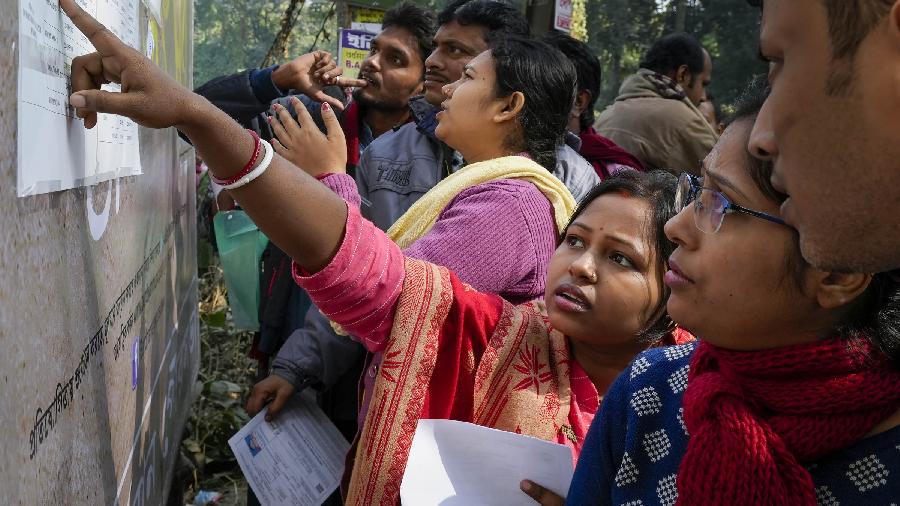
Central Idea:
The central idea of the article revolves around the recent Supreme Court ruling in India, which upheld the necessity of specialized qualifications for primary school teaching, emphasizing the significance of Diploma in Education (DEd), Diploma in Elementary Education (DElEd), or Bachelor of Elementary Education (BElEd) degrees over Bachelor of Education (B.Ed). The article highlights the implications of this decision on recruitment policies and the quality of primary education in the country.
Key Highlights:
- Different Requirements for Primary Teaching: Teaching young children in primary grades requires specialized skills in foundational literacy and numeracy, which cannot be adequately addressed by the B.Ed degree, designed for teaching older students. The Right to Education Act underscores the importance of appropriate qualifications for primary school teachers.
- Discrepancies in Qualifications: Despite regulations, there are discrepancies in the qualifications of primary school teachers, with a significant portion holding B.Ed degrees instead of the required DEd, DElEd, or BElEd qualifications.
- Challenges in Quality: The quality of teacher education programs varies, with government-funded institutions generally performing better than self-financed ones. Concerns exist regarding low mean scores, especially in mathematics, indicating a need for improvement in pedagogical content knowledge.
- Government Support and Innovation: There is a call for government support and innovation in primary teacher education, including the expansion of successful programs like BElEd and the Integrated Teacher Education Programme (ITEP).
Key Challenges:
- Discrepancies in Qualifications: The prevalence of B.Ed holders in primary teaching roles highlights the challenge of aligning qualifications with the specific requirements of primary education.
- Quality Disparities: Disparities in the quality of teacher education programs, particularly between government-funded and self-financed institutions, pose a challenge to ensuring consistently high standards of teacher preparation.
- Limited Government Focus: The article criticizes the government’s focus on higher education faculty development rather than primary teacher preparation, potentially neglecting the crucial foundation of education.
Main Terms:
- Bachelor of Education (B.Ed)
- Diploma in Education (DEd)
- Diploma in Elementary Education (DElEd)
- Bachelor of Elementary Education (BElEd)
- Right to Education Act
- Teacher Eligibility Test (TET)
- District Institutes of Education and Training (DIETs)
- Integrated Teacher Education Programme (ITEP)
Important Phrases:
- Foundational Literacy and Numeracy (FLN)
- Teacher Eligibility Test (TET)
- District Institutes of Education and Training (DIETs)
- Integrated Teacher Education Programme (ITEP)
- Pandit Madan Mohan Malaviya National Mission on Teachers & Teaching
Quotes:
- “Teaching these competencies has to be learnt by prospective primary schoolteachers, through specialized teacher education for this stage.”
- “Almost all of us have forgotten how we learned to read or manipulate the number system.”
- “Better students seem to prefer government-funded institutions.”
- “The decision to become a teacher can also occur at different stages.”
Examples and References:
- The State of Teachers, Teaching and Teacher Education Report.
- Analysis of Teachers Eligibility Test (TET) data from a particular state.
- The success of programs like BElEd offered by Delhi University.
- The announcement of the Integrated Teacher Education Programme (ITEP) and the Scheme of Pandit Madan Mohan Malaviya National Mission on Teachers & Teaching.
Facts and Data:
- 90% of teachers have some form of professional qualification.
- Only 46% of teachers teaching primary grades have the DElEd (or equivalent) qualification.
- 22% of primary school teachers in private schools have B.Ed degrees.
- 4% of students enrolled in DElEd already have a B.Ed.
- Only 14% of qualifying candidates in TET had a mean score of 60% or above.
Critical Analysis:
The article effectively critiques the discrepancy between qualifications and the requirements of primary education, highlighting the need for specialized training in foundational literacy and numeracy. It addresses disparities in teacher education quality and government focus, advocating for greater attention to primary teacher preparation. However, it could delve further into the socio-economic factors influencing qualification choices and explore potential solutions in more detail.
Way Forward:
- Strengthening government support for primary teacher education programs.
- Expanding successful models like BElEd and ITEP.
- Addressing quality disparities between institutions.
- Implementing section-wise qualifying cut-off marks in TET.
- Providing pathways for professional development for B.Ed holders aiming for primary teaching roles.
Get an IAS/IPS ranker as your 1: 1 personal mentor for UPSC 2024
Attend Now
Note4Students
From UPSC perspective, the following things are important :
Prelims level: National Food Security Act (NFSA)
Mains level: demands of farmers for a legal guarantee for MSP
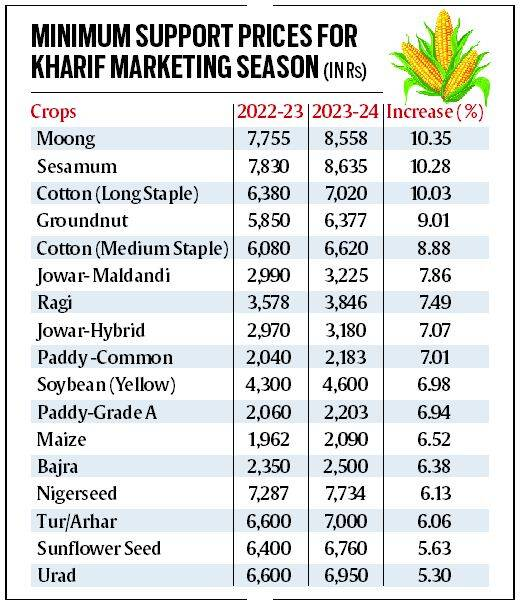
Central Idea:
Farmers in India are demanding a legal guarantee for Minimum Support Prices (MSP) to stabilize agricultural commodity prices and ensure their livelihoods. Despite the longstanding demand and political consensus, successive governments have been hesitant to implement this, primarily due to concerns about fiscal costs. However, the actual costs and benefits of such a guarantee are often misunderstood, leading to fear mongering and misconceptions about its implications.
Key Highlights:
- Farmers’ demands for a legal guarantee for MSP stem from the need for stability in agricultural commodity prices to protect their incomes.
- MSP is a mechanism to ensure price stability for essential agricultural commodities, but its implementation is limited, mainly focusing on rice and wheat.
- Misconceptions about the fiscal costs of MSP guarantee have hindered its implementation, despite political consensus and support from various parties and unions.
- The cost of procuring agricultural produce is often misconstrued, with the majority being a subsidy to consumers rather than to farmers.
- A guaranteed MSP offers an opportunity to rectify imbalances in the MSP and procurement system, promoting regional diversification and crop expansion.
- Neglect of the agrarian economy has led to declining real incomes and wages for farmers, highlighting the urgency of reforming the MSP system.
Key Challenges:
- Misunderstanding and fear mongering about the fiscal costs and implications of implementing a legal guarantee for MSP.
- Limited implementation of MSP, primarily focusing on rice and wheat, leaving other crops and regions underserved.
- Neglect of the agrarian economy leading to declining real incomes and wages for farmers.
- Political hesitancy to implement MSP guarantee despite consensus and support from various stakeholders.
- Lack of comprehensive understanding of the benefits of MSP guarantee in stabilizing agricultural commodity prices and reviving the rural economy.
Main Terms:
- Minimum Support Prices (MSP)
- National Food Security Act (NFSA)
- Price Stability
- Market Intervention
- Agricultural Commodity Prices
- Fiscal Costs
- Marketable Surplus
- Procurement System
- Agrarian Economy
- Regional Diversification
Important Phrases:
- Legal guarantee for MSP
- Fear mongering and misconceptions
- Fiscal requirements
- Price volatility
- Market intervention
- Income protection
- Regional imbalances
- Declining real incomes
- Rural economy revival
- Comprehensive reform
Quotes:
- “A guaranteed MSP may not solve the farmers’ problems. But it offers a good opportunity to rectify the imbalances in the MSP and procurement system.”
- “Protecting the income of farmers will help revive the rural economy at a time when it’s struggling with deficient demand and rising inflation.”
- “Misconceptions about the fiscal costs of MSP guarantee have hindered its implementation, despite political consensus and support from various parties and unions.”
Anecdotes:
- The article references the fear mongering and misconceptions similar to those observed during the enactment of the National Food Security Act and the National Rural Employment Guarantee Act.
- It highlights the success of MSP implementation for rice and wheat during the last two years, where market prices were higher than MSP.
Useful Statements:
- “Despite political consensus, successive governments have dithered on legalizing this mechanism, primarily due to the fear of excessive fiscal requirements.”
- “A guaranteed MSP offers an opportunity to rectify the imbalances in the MSP and procurement system, promoting regional diversification and crop expansion.”
- “Protecting the income of farmers will help revive the rural economy, particularly during times of deficient demand and rising inflation.”
Examples and References:
- Reference to the successful implementation of MSP for rice and wheat during the last two years, despite market prices being higher than MSP.
- Comparison with other countries where similar mechanisms exist to stabilize agricultural commodity prices.
- Mention of the fear mongering and misconceptions observed during the enactment of previous agricultural legislations like the National Food Security Act.
Facts and Data:
- Government procurement of wheat in 2022 was only 19 million tonnes against a target of 44 million tonnes.
- In 2023, government procurement of rice and wheat was 26 million tonnes against a target of 35 million tonnes.
- Reference to the cost of procuring agricultural produce being misconstrued, with the majority being a subsidy to consumers rather than to farmers.
Critical Analysis:
The article provides a comprehensive analysis of the demands of farmers for a legal guarantee for MSP, highlighting the misconceptions and challenges surrounding its implementation. It emphasizes the importance of rectifying imbalances in the MSP and procurement system to promote regional diversification and crop expansion. However, it could further delve into the specific policy measures needed to address these challenges and provide a more detailed analysis of the potential benefits of implementing a guaranteed MSP.
Way Forward:
- Implementing a legal guarantee for MSP to ensure stability in agricultural commodity prices and protect farmers’ incomes.
- Rectifying imbalances in the MSP and procurement system to promote regional diversification and crop expansion.
- Addressing misconceptions and fear mongering surrounding the fiscal costs and implications of MSP guarantee through public awareness campaigns and comprehensive policy discussions.
- Engaging with stakeholders, including farmers’ unions, political parties, and policymakers, to formulate and implement effective MSP policies that address the needs and concerns of all parties involved.
- Investing in rural infrastructure, storage facilities, and crop diversification programs to strengthen the agrarian economy and revitalize rural communities.
Get an IAS/IPS ranker as your 1: 1 personal mentor for UPSC 2024
Attend Now
Note4Students
From UPSC perspective, the following things are important :
Prelims level: interim budget session of Parliament
Mains level: gap between government rhetoric and ground realities, emphasizing the human impact of policy failures

Central Idea:
The article critiques the recent interim budget session of Parliament, highlighting the discrepancy between the government’s rhetoric and the lived realities of everyday Indians. Through the stories of Rekha, Kavita, and Mohan, it exposes the failure of government schemes like Ayushman Bharat, food subsidies, and employment initiatives to address the fundamental issues facing citizens.
Key Highlights:
- The government’s self-aggrandizing adjectives during the budget session are criticized for being unsubstantiated by facts.
- The article delves into the lives of ordinary Indians to reveal the truth behind government data.
- Through scenarios, it demonstrates how government schemes often fail to provide adequate healthcare, nutrition, and employment opportunities.
- The suspension of a senior professor behind a damning health report raises questions about intellectual honesty regarding data.
- The Global Hunger Index ranking and reports from international organizations highlight India’s challenges in food security.
- Unemployment rates and the plight of educated youth like Mohan illustrate the failures in job creation and protection.
Key Challenges:
- Inadequate investment in healthcare, leading to poor quality and inaccessible services for millions.
- Subsidized food options lack nutritional value, exacerbating hunger and malnutrition.
- Job scarcity and lack of protection for workers, pushing individuals to precarious employment or even dangerous situations abroad.
- Discrepancies between government claims and ground realities, highlighting issues of transparency and accountability.
Main Terms:
- Ayushman Bharat scheme
- NFHS (National Family Health Survey)
- Global Hunger Index
- Gig economy
- Unemployment rate
- Food subsidies
Important Phrases:
- “Data stored with government hospitals under the Ayushman Bharat scheme is riddled with errors.”
- “The suspension of the IIPS Director shortly after the release of the NFHS report.”
- “India ranked out of countries in the Global Hunger Index.”
- “Mohan finds himself among the percent of graduates under years of age who are unemployed.”
- “A packet of rice costs more while dal costs more than before.”
Quotes:
- “The voices of Kavita, Rekha, and Mohan did not find a place in the Prime Minister’s marathon monologue in Parliament.”
- “Every youth believes that they can cement their job position with hard work and skills.”
- “Reality gets worse for Indian women like Rekha.”
- “Three out of four Indians cannot afford a healthy diet.”
Anecdotes:
- Rekha’s struggle to access healthcare at a government hospital.
- Kavita’s dilemma between subsidized but low-nutrient food and higher quality groceries.
- Mohan’s choice between unemployment at home or precarious work abroad.
Useful Statements:
- “The numbers either misidentify the dead, incorrectly record surgery details or entirely leave out beneficiaries from the list.”
- “Half the country does not turn to government facilities in their time of need.”
- “A job in a war zone is his only option.”
- “Mohan has not found employment for months.”
Examples and References:
- Global Hunger Index ranking (India ranked out of countries).
- NFHS data highlighting issues in healthcare access.
- Mohan’s situation exemplifying unemployment among educated youth.
Facts and Data:
- India invests only percent of GDP in healthcare.
- Three out of four Indians cannot afford a healthy diet.
- percent of graduates under years of age are unemployed.
- A packet of rice costs more, while dal costs more than before.
Critical Analysis:
The article effectively exposes the gap between government rhetoric and ground realities, emphasizing the human impact of policy failures. By presenting concrete examples and data, it challenges the narrative of progress touted by the government. The suspension of the IIPS Director adds weight to concerns about data integrity and transparency. However, the article could benefit from more analysis on systemic issues contributing to these failures, such as corruption and inadequate social welfare policies.
Way Forward:
- Increase investment in healthcare to improve accessibility and quality of services.
- Reform food subsidy programs to ensure nutritious options for all citizens.
- Create more employment opportunities through targeted policies and investments in key sectors.
- Enhance transparency and accountability in data collection and reporting to address systemic issues.
- Prioritize the voices and needs of ordinary citizens in policymaking process
Get an IAS/IPS ranker as your 1: 1 personal mentor for UPSC 2024
Attend Now
Note4Students
From UPSC perspective, the following things are important :
Prelims level: na
Mains level: The electoral bonds scheme
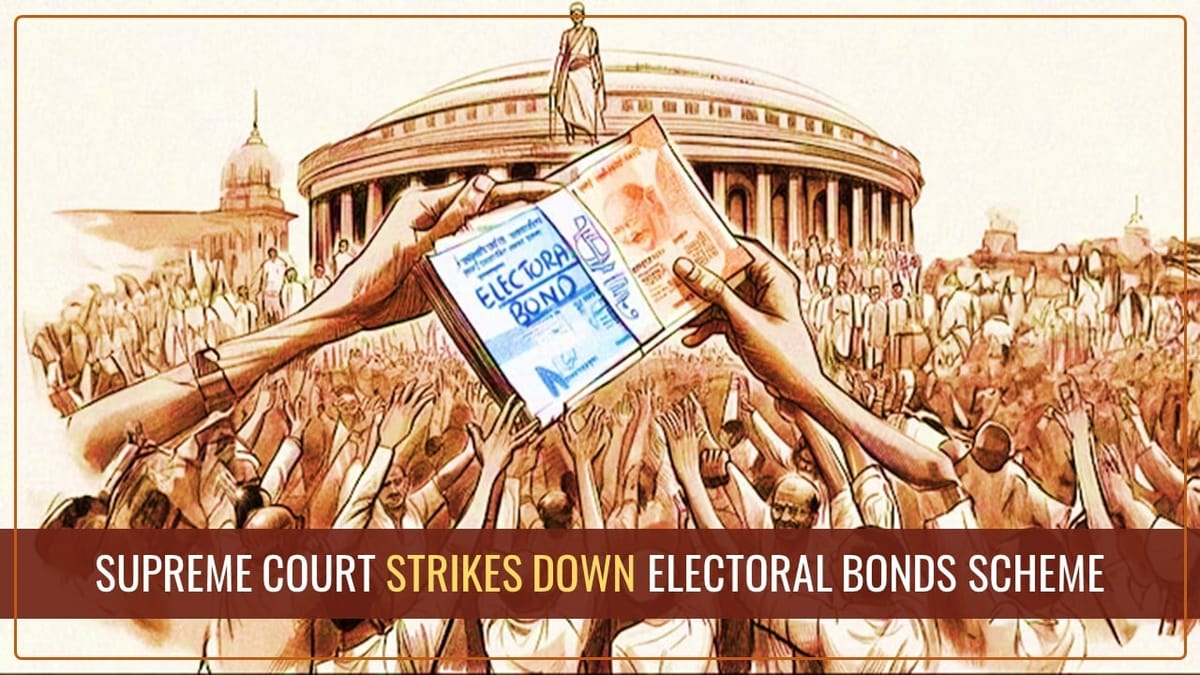
Central Idea:
The Supreme Court’s recent decision to strike down India’s electoral bonds scheme marks a significant victory for transparency in democracy. The judgment highlights the importance of ensuring that political funding is transparent and accountable to the public.
Key Highlights:
- The Supreme Court’s ruling on February 15, 2024, declared the electoral bonds scheme unconstitutional due to its lack of transparency.
- The scheme allowed undisclosed corporate funding of political parties, removing previous limits and potentially enabling influence peddling.
- Amendments to the Reserve Bank of India Act and other laws to introduce electoral bonds were deemed arbitrary and violative of fundamental rights.
- The court ordered the State Bank of India to cease issuing electoral bonds and mandated disclosure of all previously issued bonds to the Election Commission.
- The judgment underscores the importance of judicial review in upholding democratic principles and protecting constitutional rights.
Key Challenges:
- The influence of money in elections remains a challenge, including the use of black money and bribery.
- The lack of independent voting in India’s legislative process allows ruling parties to pass laws without sufficient scrutiny or consultation.
- Political parties’ resistance to transparency raises concerns about their commitment to serving the public interest.
Main Terms from the article:
- Electoral bonds: Instruments for anonymous political donations introduced in India.
- Transparency: Openness and accountability in political processes and decision-making.
- Judicial review: The power of courts to assess the constitutionality of laws and government actions.
- Fundamental rights: Constitutional protections for individual freedoms and equality.
- Campaign funding: Financial support for political parties and candidates during elections.
Important phrases for mains answer writing:
- “Transparency is the basis of campaign funding.”
- “The judgment restores transparency in political funding.”
- “The ruling prevents undue influence on the government by corporate donors.”
- “The power of judicial review is crucial for upholding democracy.”
- “The price of democracy is eternal vigilance.”
Quotes for value addition:
- “The electoral bonds scheme was opaque.”
- “The judgment prevents crony capitalism from influencing political parties.”
- “The ruling party bypassed transparency with electoral bonds.”
- “The power of judicial review is precious.”
- “We need political parties, but it is up to us to ensure they work for the good of society.”
Useful Statements:
- “The Supreme Court’s decision reaffirms the principle that transparency is essential for democracy.”
- “The ruling highlights the need for robust mechanisms to prevent undue influence on political processes.”
- “Public scrutiny and vigilance are vital for holding political parties accountable.”
- “The judgment sets a precedent for upholding constitutional rights in electoral matters.”
- “Citizens’ engagement is crucial for ensuring that political parties serve the interests of the nation.”
Examples and References:
- The case of electoral bonds exemplifies the tension between transparency and political expediency in India’s democracy.
- Similar challenges with campaign finance transparency have been observed in other democracies worldwide.
- Instances of corporate influence on policy-making underscore the importance of regulating political funding.
- Civil society organizations and activists have played a critical role in advocating for transparency in political funding.
- Past instances of electoral malpractice highlight the need for stronger legal safeguards against undue influence.
Facts and Data:
- The Supreme Court’s ruling was issued on February 15, 2024.
- Electoral bonds were introduced as a means of anonymous political funding.
- Amendments to various laws facilitated the implementation of the electoral bonds scheme.
- The Election Commission of India raised concerns about the potential misuse of electoral bonds.
- The judgment requires the State Bank of India to disclose all previously issued electoral bonds to the Election Commission by March 6, 2024.
Critical Analysis:
- The electoral bonds scheme represented a departure from established norms of transparency in political funding.
- The Supreme Court’s decision underscores the judiciary’s role in upholding democratic principles and constitutional rights.
- The ruling highlights the challenges of balancing political expediency with the need for transparency and accountability.
- Political parties’ resistance to transparency raises questions about their commitment to democratic values.
- The judgment sets a precedent for future legal challenges to electoral practices that undermine transparency and accountability.
Way Forward:
- Strengthening legal safeguards to ensure transparency and accountability in political funding.
- Promoting civic engagement and public awareness to hold political parties accountable.
- Enhancing mechanisms for independent oversight and regulation of campaign finance.
- Encouraging broader political reforms to address systemic issues of corruption and undue influence.
- Emphasizing the importance of upholding democratic principles and constitutional rights in electoral matters
Get an IAS/IPS ranker as your 1: 1 personal mentor for UPSC 2024
Attend Now
Note4Students
From UPSC perspective, the following things are important :
Prelims level: Na
Mains level: ethical considerations surrounding the use of Artificial Intelligence (AI) to clone voices for creative purposes in the music industry
Get an IAS/IPS ranker as your 1: 1 personal mentor for UPSC 2024
Attend Now
Note4Students
From UPSC perspective, the following things are important :
Prelims level: Bar Council of India
Mains level: systemic challenges plaguing legal education in India and the urgent need for reform

Central Idea:
The article discusses the recent recommendations made by the Parliamentary Standing Committee on Personnel, Public Grievances, Law, and Justice to enhance the quality of legal education in India. It highlights the need for a new regulatory body, the National Council for Legal Education and Research (NCLER), to oversee post-graduation level education, prioritize research in law schools, and address the challenges hindering the excellence of legal education in the country.
Key Highlights:
- Recommendations for Regulatory Reform: The committee proposes limiting the Bar Council of India’s (BCI) role in legal education regulation and establishing the NCLER to set qualitative benchmarks for post-graduation level education.
- Emphasis on Research: Recognizing the deficiency in research focus among Indian law schools, the committee stresses the importance of promoting research to improve teaching outcomes and cultivate critical thinking skills among students.
- Global Perspective: Acknowledging the impact of globalization on legal education, the committee suggests incorporating global curriculum, international exchange programs, and more international law courses to prepare students for a globalizing world.
- Call for Strong Leadership and Academic Freedom: The article emphasizes the necessity for passionate and visionary academic leaders in law faculties and universities to foster a supportive environment for faculty and promote academic freedom.
Key Challenges:
- Lack of Leadership: The absence of effective leadership in law faculties and universities impedes efforts to achieve excellence in legal education.
- Insufficient Research Focus: Many law schools in India prioritize teaching over research, resulting in a scarcity of indigenous legal knowledge and reliance on Western legal literature.
- Resistance to Change: Implementing reforms in legal education requires a shift in mindset among stakeholders and a commitment to prioritize higher education.
Main Terms or key quotes:
- National Council for Legal Education and Research (NCLER)
- Bar Council of India (BCI)
- Globalization
- Academic Freedom
Important Phrases for mains answer enrichment:
- “Sea of institutionalized mediocrity”
- “Consumer of legal knowledge generated in the West”
- “Augmenting the research ecosystem”
- “Complete academic freedom and autonomy”
Quotes for quality essay:
- Albert Einstein: “The value of a college education is not the learning of many facts but the training of the mind to think.”
- Jawaharlal Nehru: “A university stands for humanism, for tolerance, for reason, for the adventure of ideas and for the search of truth.”
Useful Statements:
- “Legal education in India needs regulatory reform to address its current shortcomings and enhance its quality.”
- “Promoting research is crucial to improving teaching outcomes and fostering critical thinking skills among students.”
- “Effective leadership and academic freedom are essential for driving meaningful change in legal education.”
Examples and References:
- National Law School of India University and Jindal Global Law School are among the few Indian law schools ranked in the top 250 globally.
- Out of over 800 law journals indexed in Scopus, only a handful are from India, indicating the low level of research output from Indian law schools.
Facts and Data:
- India has over 1,700 law schools, but only a few have achieved excellence in legal education.
- Legal education in India has historically lagged behind fields like medicine and engineering in terms of priority and investment.
Critical Analysis:
The article aptly highlights the systemic challenges plaguing legal education in India and the urgent need for reform. It identifies regulatory deficiencies, research gaps, and leadership issues as key barriers to achieving excellence. However, it fails to delve deeply into the specific strategies or mechanisms required to address these challenges.
Way Forward:
- Implement the recommendations of the Parliamentary Standing Committee to establish the NCLER and redefine the role of the BCI.
- Invest in promoting research culture in law schools through funding, infrastructure, and academic support.
- Encourage academic leadership that fosters a culture of innovation, excellence, and academic freedom.
- Foster collaboration between law schools, industry, and international institutions to enhance curriculum relevance and global exposure for students.
In conclusion, while the recommendations put forth by the committee represent a step in the right direction, concerted efforts from all stakeholders are necessary to bring about meaningful change and elevate the quality of legal education in India.
Get an IAS/IPS ranker as your 1: 1 personal mentor for UPSC 2024
Attend Now
Note4Students
From UPSC perspective, the following things are important :
Prelims level: Places of Worship Act, 1991
Mains level: need for the Supreme Court to intervene to protect the integrity of the Places of Worship Act and prevent its politicization
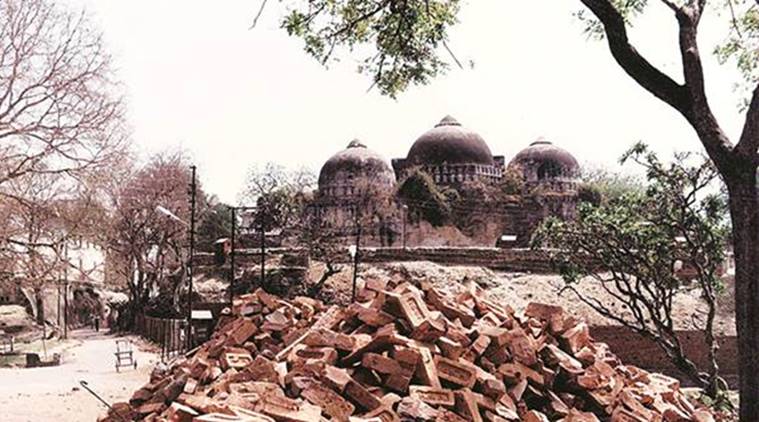
Central Idea:
The article discusses the aftermath of the Supreme Court verdict on the Babri Masjid case in November 2019 and its implications on the Places of Worship (Special Provisions) Act, 1991. It highlights the challenges posed by the resurgence of petitions targeting mosques like the Gyanvapi Masjid in Varanasi and the Shahi Idgah in Mathura, and the subsequent debates on the Act’s validity and applicability. It emphasizes the need for the Supreme Court to intervene to protect the integrity of the Act and prevent its politicization.
Key Highlights:
- Supreme Court’s verdict on the Babri Masjid case in November 2019 praised the Places of Worship Act, 1991 for preserving the religious character of places of worship as of August 15, 1947.
- Hindutva forces initiated petitions targeting mosques in Mathura, Varanasi, and other places, challenging their status and calling for their liberation.
- Despite lack of concrete evidence, petitions against mosques were admitted in various district courts, signaling a deliberate challenge to the Places of Worship Act.
- The Supreme Court’s silence on the increasing challenges to the Act raised concerns about its integrity and enforcement.
- The court’s decision to hear petitions against the Act itself and the Union government’s delays in specifying its stance raised doubts about the Act’s future.
Key Challenges:
- Increasing petitions challenging the status of mosques threaten communal harmony and challenge the secular principles enshrined in the Indian Constitution.
- The politicization of the issue, with petitions being used as a tool to further certain political narratives, adds complexity to the debate.
- Delays in the Supreme Court’s intervention and the government’s ambiguity on the Act’s status create uncertainty and erode public trust in the legal system.
- Historical grievances and communal tensions fuel the resurgence of demands for the reclamation of religious sites.
Main Terms or key words:
- Places of Worship (Special Provisions) Act, 1991: Legislation preserving the religious character of places of worship as of August 15, 1947, and prohibiting their conversion.
- Hindutva: Ideology promoting Hindu nationalism.
- Communal Harmony: Peaceful coexistence and cooperation among different religious communities.
- Secularism: Principle of separating religion from state affairs and ensuring equal treatment of all religions.
- Petitions: Formal requests submitted to a court seeking legal action or remedy.
Important Phrases for mains value addition:
- “Non-retrogression as an essential feature of our secular values.”
- “Challenges to the Act amount to a breach of public trust.”
- “The politicization of petitions serves certain political narratives.”
- “The silence of the top court is unsettling.”
Quotes for quality enrichment of mains answers:
- “The Places of Worship Act imposes a non-derogable obligation towards enforcing our commitment to secularism under the Indian Constitution.”
- “Similarly minded people are as little likely to be deterred by the provisions of the Places of Worship (Special Provisions) Act 1991.”
- “The ascertainment of the religious character of a place as a procedural instrument may not necessarily fall foul of the provisions of sections 3 and 4 of the Act of 1991.”
Anecdotes:
- The order of a district court in Uttar Pradesh in 1986 kick-started events leading to the destruction of the Babri Masjid, illustrating the significance of legal decisions regarding places of worship.
Useful Statements:
- The resurgence of demands for the reclamation of religious sites threatens communal harmony and challenges secular principles.
- The Supreme Court’s intervention is crucial to uphold the integrity of the Places of Worship Act and prevent its politicization.
Examples and References:
- Petitions targeting mosques in Mathura, Varanasi, and other places highlight the growing challenges to the Places of Worship Act.
- The Babri Masjid-Ramjanambhoomi agitation and slogans like “Ayodhya to jhanki hai, Kashi, Mathura baqi hai” demonstrate historical grievances and communal tensions.
Facts and Data:
- The Places of Worship Act, 1991, preserves the religious character of places of worship as of August 15, 1947.
- The Supreme Court admitted petitions challenging the Act’s validity and the government’s delays in specifying its stance.
Critical Analysis:
The article provides a comprehensive overview of the challenges posed by petitions targeting mosques and questioning the Places of Worship Act, 1991. It emphasizes the importance of preserving communal harmony and secular principles while addressing historical grievances. However, it also highlights the politicization of the issue and the need for timely intervention by the Supreme Court to prevent further escalation.
Way Forward:
- The Supreme Court should actively intervene to uphold the integrity of the Places of Worship Act and prevent its politicization.
- Political leaders and stakeholders should prioritize communal harmony and refrain from using religious sentiments for political gain.
- Civil society should promote dialogue and understanding among different religious communities to prevent communal tensions.
- The government should clarify its stance on the Act and ensure its effective implementation to maintain secularism and protect religious freedoms.
Get an IAS/IPS ranker as your 1: 1 personal mentor for UPSC 2024
Attend Now






.jpg?$p=796eb02&f=16x10&w=852&q=0.8)

















